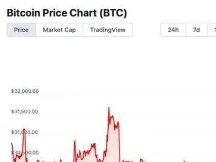Pursuit of Bitcoin and Cryptopunk
From Bitcoin to blockchain to data distribution, the country's cryptocurrency changes daily, making it difficult to predict the direction of its growth. But we can still see some signs. There are many new ideas in the cryptocurrency industry, but they are all based on research from the past ten years. You can go back in history to understand the support behind the Bitcoin movement and understand Bitcoin's vision for the future.

Prior to the 1970s, cryptography was often used covertly by military and intellectual organizations.However, the "Data Encryption Standard" published by the US government and Dr. Whitfield Diffie and Dr. Martin Hellman. direction ".
In the 1980s, Dr. David Chaum wrote extensively on the use of cryptography.One of the documents "Security Without Proof of Identity: Being the 'Big Brother' in Past Cases was about digital anonymity and famous anonymity.
Over the following years, these ideas came together to create mobility.
In 1992 Eric Hughes, Timothy C May and John Gilmore formed a small group of Cygnus Solutions, John Gilmore's San Francisco Bay Area Company. The team has witty names: “cypherpunks”, short for “cipher” and “cyberpunk”.
A cypherpunk list was created around this time. A few months later, Eric Hughes published A Cypherpunk's Manifesto. he writes:
“In the age of electricity, privacy is a prerequisite for an open community. Privacy cannot interfere with secrecy. Privacy is something not everyone wants to know, and privacy is something you don't want anyone to know.
Sounds reasonable. But you might think that I am not cypherpunk and that there is nothing wrong. What are you hiding? But, as Bruce Schneier said, "you don't have to hide" is a bad thing. These are the demons who want privacy, including the criminals, who use privacy measures.
For example, shield a window so that outside people cannot see the house. It does not describe the type of crime or misconduct you are involved in. This is only if you are concerned about the negative effects of exposing yourself to the outside world.
If you are reading this article you will be a direct beneficiary of the cypherpunk movement.
Here are some well-known cypherpunks and their affiliates.
Jacob Appelbaum: Tor Developer
Julian Assange: Founder of WikiLeaks
Dr Adam Back: inventor of Hashcash thiab Founder of Blockstream
Bram Cohen: Inventor of BitTorrent
Hal Finney: author of PGP 2.0 and author of a reusable proof of work
Tim Hudson: Co-author of SSLeay (OpenSSL Predecessor)
Paul Kocher: Co-author of SSL 3.0
Moxie Marlinspike: Founder of Open Whisper Systems (signal developer)
Steven Schear: author of the "Guarantee Canary" concepts
Bruce Schneier: Best Security Research
Zooko Wilcox-O'Hearn: Developer DigiCash thiab Founder of Zcash
1990
During the decade of the 1980s to the 1990s, a crypto war broke out and the U.S. government attempted to restrict the use of cryptographic devices.
Currently, the encryption is almost entirely based on military technology, and the encryption has been placed in the 13th category of the US ammunition list and is strictly limited to "export".
Due to export restrictions, "exportable" SSL encryption technology only supports 40-bit key lengths and may break even in days of personal computer use.
Due to the dissatisfaction with civil liberties and privacy advocates against the US government over the violation of public privacy, the popularity of crypto software outside of the US and Matt Blaze the success of the theft of the Clipper chip using the backbone of the US government, the US government ultimately ditched the Monopoly encryption device.

In 1997, Dr. Adam Back created Hashcash. Hashcash is spam protection that maximizes the cost (time and cost) of sending spam, costing spammers money.
Adam Back believes that Hashcash can be used more easily than Chaum's digicash because users don't have to create an account. Additionally, Hashcash has taken several steps to prevent "double spend" attacks.
In 1998, Wei Dai announced the concept of "b-money" to use the contract of anonymous people.It comes with two details that you might not be familiar with.The first idea is that all participants keep independent data to collect user data.;The second strategy is different from the first, in which some participants collect users' balances and the participants must pay a deposit to prevent malicious use.
Bitcoin gets the first impression,Many other cryptocurrency operations have adopted the second concept (for example, now called proof of stake).
21st century
Obviously, cypherpunks were developed through individual research, many years of development, and tested and developed the proper structure in the 1990s.Most importantly, cryptocurrency was born in the 21st century.
In 2004, Hal Finney developed a Driver's Certificate (RPOW) based on Back's Hashcash. RPOW is a unique crypto token that can only be used once, just like Bitcoin devices are not used. However, usability and double attack protection are still limited on intermediate servers.
Nick Szabo planned “A Little Hot” in 2005, a digital writing based on Finney's RPOW. However, Szabo did not propose to limit the total rate of gold bit and assumed that the value of each unit of gold bit would depend on the count to be made.
Finally, in 2008, Satoshi Nakamoto (person / organization not yet known) posted a free Bitcoin article on hashcash and Bmoney. In fact, Satoshi Nakamoto stated in an email to Wei Dai that Dr. You said you heard about BMoney from Back.
Satoshi Nakamoto spoke specifically about privacy in his free Bitcoin form.
“Business models always achieve a high level of confidentiality by restricting access to information by relevant organizations and trusted third parties. If all business information needs to be disclosed, the confidentiality process may not work, but otherwise there is a way: Block the flow of information by hiding the key from the insurer The public stock exchange, which may know that a no one has sent money to another, but no information can link the purse to anyone, the purse only presents the purse. (tape), but does not disclose the personal information of participants. "

Bitcoin Privacy Model (Source: Bitcoin Free Paper)
Satoshi Nakamoto has contributed to the excellent development of cryptography by developing machines that humans can use, extend and fork.
The birth of Bitcoin made the whole cypherpunk movement. This allows organizations like WikiLeaks to be blacklisted from the traditional financial system and continue to regulate transactions through free Bitcoin.
Struggle for confidentiality
However, with the recent growth of the Bitcoin ecosystem, privacy concerns appear to be diminishing.
Many early Bitcoin users believed the Bitcoin system could keep them anonymous, but for the best of our experience, many law enforcement agencies have suggested they could identify people.
The Open Bitcoin Privacy Project addresses these complaints by educating users about privacy and endorsing the best use of Bitcoin services. The group has developed threat models to attack the privacy of Bitcoin wallets.
These models divide the current protesters into the following categories:
Blockchain Observer - Connect different messages with the same ID observing throughput patterns.
Network Observer - Monitor the operation of a peer-to-peer network to share the location with other businesses.
Physical attackers - tampering with or identifying wallets by searching for information about wallets.
Transaction Participant - Creates a business to track blockchain operations and identify the merchant.
Portfolio physicians can provide users with personally identifiable information and then ask them to monitor their changes.
Jonas Nick from Blockstream has done a lot of research on Bitcoin user privacy.
Jonas Nick has introduced a lot of data data in good words. This protection is deadly for the spv Bitcoin users: Video Location: https: //youtu.be/SCK4Pakdnd
The biggest threat to privacy when it comes to Bitcoin by blockchain researchers.Since all transactions on the network are always public, anyone, now or in the future, can threaten the privacy of Bitcoin users.
so,As a best practice, do not reuse the same Bitcoin address., it is also a consensus.
Satoshi Nakamoto also mentioned this in his Free Bitcoin form.
As an added privacy protection, merchants should use a new key partner every time they submit a business to prevent someone from finding the owner of those businesses. Many business entrants should report that all resources come from the same policy. This is an exception. that some organizations may be disclosed. The risk here is that these organizations may disclose other key owner business when the key owner is disclosed. "
Cryptopunk innovations in recent years
Many technologies and best practices have been developed in recent years to improve the privacy of Bitcoin users. Dr. Proposed in BIP32. Pieter WuilleHierarchical deterministic portfolio(Hierarchical deterministic portfolio)This can reduce the difficulty of managing the space in your Bitcoin wallet.
While privacy is not Pieter Wuille's primary focus, hierarchical deterministic portfolios could easily create new addresses for businesses, preventing user location retrieval.
The Elliptic Curve Diffie-Herman-Merkel (ECDHM) address is a bitcoin address that enhances privacy. ECDHM addresses can be shared publicly. The sender and receiver of the exchange can use the ECDHM address to hide existing Bitcoin addresses that cannot be predicted by blockchain administrators. Thus, ECDHM addresses can be reused as opposed to traditional Bitcoin addresses which are reused for the data breach.
Examples of ECDHM address schemes are the stealth address (secret location) prepared by Peter Todd, the BIP47 redeemable numbers provided by Justus Ranvier, and the non-exchange BIP75 address provided by Justin Newton et al.
Users can also use Bitcoin mixers to improve theirs, but this method is very labor-intensive.The concept of mixed tokens by network partners is similar to the “mixed network” mentioned by Dr. Chaum.

Several existing coin mixing algorithms include:
room sharing—— The first coin shuffling algorithm was CoinJoin, commissioned by Blockstream co-founder Gregory Maxwell. This allows the user to set up a business using products from multiple parties and send bitcoin to multiple sources (e.g. the same group). Since all the money is mixed up, it is difficult to find the relationship between the products and the products.

Simple CoinJoin Transaction Diagram
participate in business—— Announced by developer Chris Belcher, JoinMarket allows Bitcoin holders to join the CoinJoin mix by offering Bitcoin for value. JoinMarket uses this type of smart contract to protect the user's private key from location, thus reducing the risk of key loss. Simply put, JoinMarket allows you to improve the privacy of your Bitcoin business in a cheap and distributed way.
Mix of parts—— A team of researchers from the University of Saarland in Germany has developed a different set of coin-based coinShuffle suits. CoinShuffle is an improvement on CoinJoin which receives no blended fees due to the lack of trusted third parties to create blended value.
exchange of parts—— CoinSwap requested by Maxwell is different from CoinJoin in that it uses a set of four different signatures (two escrow transactions and two unconventional transactions) to complete the transaction. Although less profitable than CoinJoin, it offers greater privacy and is a more competitive token.
A mixed value is equivalent to "hiding a tree in the forest", but the forest is usually not very large.The mixed results can only be confusing and cannot be achieved anonymously. Such strategies can make it more difficult for lower level inspectors to track cash flow, but higher level analysts can determine mixed results.
In 2014, Kristov Atlas (founder of the Open Bitcoin Privacy Project) described the vulnerabilities of CoinJoin users in an article that could be misused.

CoinJoin Entry / Exit Consolidation
Atlas points out that despite the poor monitoring equipment, 69% of the products and 53% of the profits of the CoinJoin market can be seen.
There are also privacy-focused cryptocurrencies.
For example, Dash created by Evan Duffield and Daniel Diaz has a special feature called "Darksend". Darksend is an improvement of CoinJoin, mainly on the use and frequency of coin combinations.
Dash result mixes use amounts such as 0.1 DASH, 1 DASH, 10 DASH, and 100 DASH, resulting in very difficult integration and output. In each combination of results, the user provides an equal amount of input and output.
In order to ensure the confidentiality of fiat currency and to make it more difficult for attacks to succeed, Darksend has just operated at a special time.

DASH mixed currencies (Source: DASH White Paper)
There is also a bunch of private coins that weren't made on Bitcoin. In 2014, Nicolas van Saberhagen released a free copy of CryptoNote.. Some cryptocurrencies are based on the CryptoNote concept, like Monroe. The most important updates are the Cipher Ring Signing and One-Time Keys..
A digital signature, such as the Bitcoin signature, is created with two keys (public key and private key).So, as long as a person can use a private key to register with a business, they can prove that the public address corresponding to the private key is ta.

The signature ring was created in 1991 by Dr. As the group's signature was requested by Chaum and Eugene van Heyst, in 2001 Dr. It was first claimed by Adi Shamir and others. The signature ring must have a group member, each with a unique key partner.
The signature ring can prove that the signer of the particular word is a member of a group. The main difference between modern digital signatures is that the signer only has to hold the private key, when they cannot verify the authenticity of the signer.
So, looking at the signature ring containing the public keys of Alice, Bob, and Carol, we can only determine that the signer is one of us, but we don't know who signed names for the exchanges. Signaling rings provide another level of confusion, making it difficult for blockchain researchers to track the initiators of each payment system.
Interestingly, we have applied for a signature ring in whistleblower status, which can prove the credibility of the expert base without revealing the identity of the whistleblower (when the whistleblower is a member favorite group).

Signature ring (Source: https://cryptonote.org/inside/)
CryptoNote aims to reduce the risk of reuse and use strategies to track exit.The payment address is a unique key created by the information of the payer and the payee. As long as you use a signature ring for ideas, it's hard to determine which material to use.
When a blockchain administrator sees a combination of addresses being used as a blockchain and relationship building activity, a tree diagram occurs because no address is used twice. With more trades, the probability of a dendrogram increases exponentially as each ring sign adds uncertainty to the flow of value at the address.
Therefore, we cannot determine the special payment address.
Depending on the number of signal ring participants, the confusion of each change ranges from "1/2" to "1/100". Each update increases entropy and increases the difficulty of tracking blockchain monitors.

Analysis of anti-blockchain (Source: https://cryptonote.org/inside/)
Innovation Cypherpunk
While there are still many hidden risks to the privacy and security of cryptocurrency users, the future is bright with the way forward for Cypherpunk.
Unknowingly Evidence May Lead to the Next Great Force of Privacy. Zero-knowledge proof was first seen in 1985 to extend the capabilities of the cryptographic protocol.
Maxwell said in 2013 that Dr. We researched privacy as “Bitcoin of equal value” written by Back. Securities trading uses zero knowledge limits to prove Bitcoin trading, to ensure that the profits made in the exchange are only visible to the parties involved.
Confidentiality is a big step forward in itself.However, when combined with CoinJoin, you can create value-added integration services that block all connections between products and products.
Maxwell once introduced the "Sidechain Elements" theme at the Bitcoin Developer Conference in San Francisco. I remember, “One of the biggest regrets of Internet Engineering Task Force (IETF) seniors is that they sent inaccurate data while using the Internet.
When it comes to privacy in Bitcoin, Maxwell obviously thinks the same. If only a confidential matter was used from the start. Today, Blockstream used the privacy of the Liquid sidechain to hide exchange transactions.
Maxwell used proven authentication on the Bitcoin network.(Payment without knowledge, ZKCP),And you've made your first payment.ZKCP is a trusted trading platform that allows clients to purchase information from sellers using Bitcoin. Customers only receive information at the time of payment. Buyers and sellers do not have to trust each other or rely on a third party order.
A few years ago, I wrote an article on Zerocoin and pointed out that there are some business issues that need to be addressed before the system can be used in practice. Then the scientists proved themselves and solved the reliability problem by developing initial procedures. Zerocoin Vision will soon be available on Zcash developed by Wilcox-O'Hearn.
Zcash offers complete privacy while using public channels to maintain a decentralized network.The Zcash trade simply hides the payer, the payer, and the exchange rate of each trade on the chain. Only the Principal Secretary can see the details of this exchange. Since the content of Zcash transactions is encrypted and private, the system must use a new encryption method to verify the payment.
Zcash uses a zero-knowledge file called zk-SNARK.zk-SNARK was created by a group of experienced cryptographers.
Exchange metadata is encrypted and exchange permissions and accounts are not disclosed.zk-SNARK is used to prove the validity of the exchange. Zcash will be the first digital payment to complete anonymous requests.
Succession Cypherpunk
In the last ten years of cypherpunk research, computer technology has also seen great success. Individuals and groups can communicate and interact anonymously.
Two people can exchange information, trade and enter into electronic contracts without knowing the names and personalities of the other. Of course, the government must stop or release the technology because it endangers national security, promotes crime and can create segregation.

Cypherpunk knows that if you want privacy, you have to protect it. For hundreds of years, people have relied on many ways to protect themselves, such as whispering, private conversations, texting, closing doors, holding hands, and transitioning to another.
Prior to the 20th century, there was no proprietary or sophisticated technology that would allow large-scale experiments to be performed at low cost.
Despite the advent of privacy enhancing technology, the world is still focused on surveillance and self-deprecation. We have entered the era of Crypto Wars 2.0 from the crowd.
Although cypherpunk won the first crypto war, we don't have to overcome it. Zooko failed the cypherpunk project and he is warning us to prepare for failure.

Cypherpunk believes that privacy is a basic human right, including privacy created by government.They understand that even if the security of the system is weakened for some reason (including the implication of "trust"), it will compromise the security of the users of the system. .
Cypherpunk wants you to write code. They came forward because they knew someone had to write software to protect themselves. They will also allow other cypherpunks to learn, attack, and improve.
Cypherpunk allows anyone to exercise their rights and regardless of whether others agree with the software they write. They know that software cannot be compromised and general distribution cannot be stopped.
Signature News: The original cypherpunk mailing list no longer exists, but the cypherpunk group has grown to a size never seen before. We discussed the concepts of various mailing lists, chat rooms and forums. Much work remains to be done at this time, and while the design and implementation of the privacy protection system has been successful, it is far from the best and the public will benefit. hard to reap the benefits. There is still a lot of fighting going on in crypto warfare. Let's hold down the keyboard and move forward together.

Scan QR code with WeChat































